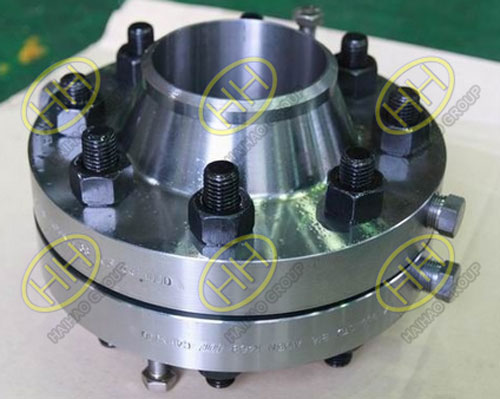Haihao Group takes you to understand the flow-restricting orifice plate in the pipeline system
As a throttling element, orifice plates are valued for their simple structure, ease of processing, low manufacturing costs, and convenient installation. When used to meet process requirements, orifice plates offer a cost-effective alternative to control valves, significantly reducing investment and operational maintenance expenses. As a result, these plates have gained widespread adoption in industrial processes abroad, playing a crucial role in ensuring the safe operation of facilities.
Principle of Orifice Plates:
Orifice plates are employed to restrict fluid flow or reduce fluid pressure. As fluid passes through the orifice plate, a pressure drop occurs, and the flow rate through the plate increases with the increasing pressure drop. However, when the pressure drop exceeds a certain value, known as the critical pressure drop, the flow rate remains constant regardless of a decrease in outlet pressure. Orifice plates operate based on this principle, limiting fluid flow or reducing fluid pressure effectively.
Classification of Orifice Plates:
Orifice plates can be classified based on the number of openings on the plate, including single-hole plates and multi-hole plates. Additionally, they can be categorized into single-stage and multi-stage based on the number of orifice plates used.
Materials Used in Orifice Plates:
Standard materials for orifice plates include 316 stainless steel, 304 stainless steel, 310 stainless steel, Hastelloy C276, Hastelloy B3, duplex stainless steel, super duplex stainless steel, Monel 400, carbon steel, titanium, nickel 600, tantalum, PTFE, PVDF, and more. Customization options are available for specific material requirements.
Applications and Functions of Orifice Plates:
Situations where a process material needs to be depressurized.
In instances where significant pressure drop is required upstream or downstream of a valve to reduce erosion caused by fluid impact. Orifice plates can be connected in series upstream of the valve.
Places where fluid flow needs to be controlled at a low and continuous rate, such as in pump flushing pipelines, bypass pipelines for standby pumps (low-flow protection pipelines), and analytical sampling lines.
Areas requiring pressure reduction to minimize noise or wear, such as in venting systems.
At Haihao Group, we are committed to delivering high-quality and tailored solutions to our clients in the pipeline systems industry. Our expertise in producing customized orifice plates ensures the efficiency and safety of fluid control processes in various applications.If your project requires these products, please feel free to contact us.



